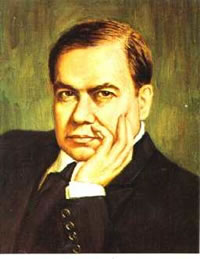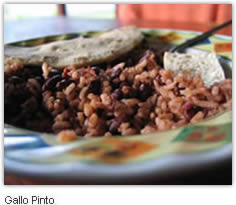There is a saying beauty is in the eyes of the beholder. I believe that saying is true about poetry. Theoretically there is no way to truly define poetry. Educationally and according to Webster’s Dictionary poetry is the act, theory, or structure of poems. I define poetry as a release of thoughts or feelings, metaphorically or rhythmically. Poetry is a part of my culture because it reflects my character and experiences in life that has influenced, or affected me. I think that’s true of all poetry. I see poetry as being a story of the author’s soul. Poetry is a part of Nicaragua’s culture. They put much emphasis on modern poetry even though it’s said to get bad press or no press at all. Modernism is a combination of romanticism, parnassicism, and symbolism (Villacres, 2000). Poetry has been and still an outlet for political and social commentary. The social condition throughout the 19th Century gave rise to an intellectual vacuum that sought realization through art, science, politics, and other life arenas (Villacres, 2000). The political independence from Spain brought political corruption and violence which furthered a social eagerness for freedom (Villacres, 2000). During the mid-19th Century, Latin American writers’ modeled free thinking French and Spanish romantics to express the disillusion Hispanic condition (Villacres, 2000). One poet who was very influential on Nicaraguan poetry was Ruben Dario.  Dario is a modernist artist who describes his poetry as the Hispanic form of the universal crisis in literature and spirit that began around 1885 (Villacres, 2000). Dario is considered the father of the Latin American modernist movement because of his innovative rhythmic and metric structure, and sensual imagery and symbolism (Villacres, 2000). He is attributed with adding a musical, rhythmic quality and an unparalleled sensitivity and cognizance to his verse. One of his poems that I love is A Roosevelt (To Roosevelt). The poem is a letter addressed to the U.S President Theodore Roosevelt. Theodore Roosevelt was the individual who represented the U.S. incursions into Latin America that outraged even nonpolitical poets such as Ruben Dario (Villacres, 2000). President Roosevelt supported a 1903 revolution in Panama that resulted in the annexation by the U.S of territory for the Panama Canal and in 1904 proclaimed a corollary to the Monroe Doctrine which justified the use of the U.S. military to police Latin America (Villacres, 2000).
Dario is a modernist artist who describes his poetry as the Hispanic form of the universal crisis in literature and spirit that began around 1885 (Villacres, 2000). Dario is considered the father of the Latin American modernist movement because of his innovative rhythmic and metric structure, and sensual imagery and symbolism (Villacres, 2000). He is attributed with adding a musical, rhythmic quality and an unparalleled sensitivity and cognizance to his verse. One of his poems that I love is A Roosevelt (To Roosevelt). The poem is a letter addressed to the U.S President Theodore Roosevelt. Theodore Roosevelt was the individual who represented the U.S. incursions into Latin America that outraged even nonpolitical poets such as Ruben Dario (Villacres, 2000). President Roosevelt supported a 1903 revolution in Panama that resulted in the annexation by the U.S of territory for the Panama Canal and in 1904 proclaimed a corollary to the Monroe Doctrine which justified the use of the U.S. military to police Latin America (Villacres, 2000).
Rubén Darío : To Roosevelt
It is with the voice of the Bible, or the verse of Walt Whitman,
that I should come to you, Hunter,
primitive and modern, simple and complicated,
with something of Washington and more of Nimrod.
You are the United States,
you are the future invader
of the naive America that has Indian blood,
that still prays to Jesus Christ and still speaks Spanish.
You are the proud and strong exemplar of your race;
you are cultured, you are skillful; you oppose Tolstoy.
And breaking horses, or murdering tigers,
you are an Alexander-Nebuchadnezzar.
(You are a professor of Energy
as today's madmen say.)
You think that life is fire, t
hat progress is eruption,
that wherever you shoot
you hit the future.
No.
The United States is potent and great.
When you shake there is a deep tremblor
that passes through the enormous vertebrae of the Andes.
If you clamor, it is heard like the roaring of a lion.
Hugo already said it to Grant: The stars are yours.
(The Argentine sun, ascending, barely shines,
and the Chilean star rises...) You are rich.
You join the cult of Hercules to the cult of Mammon,
and illuminating the road of easy conquest,
Liberty raises its torch in New York.
But our America, that has had poets
since the ancient times of Netzahualcoyotl,
that has walked in the footprints of great Bacchus
who learned Pan's alphabet at once;
that consulted the stars, that knew Atlantis
whose resounding name comes to us from Plato,
that since the remote times of its life
has lived on light, on fire, on perfume, on love,
America of the great Montezuma, of the Inca,
the fragrant America of Christopher Columbus,
Catholic America, Spanish America,
the America in which noble Cuahtemoc said:
"I'm not in a bed of roses"; that America
that trembles in hurricanes and lives on love,
it lives, you men of Saxon eyes and barbarous soul.
And it dreams. And it loves, and it vibrates, and it is the daughter of the Sun.
Be careful. Viva Spanish America!
There are a thousand cubs loosed from the Spanish lion.
Roosevelt, one would have to be, through God himself,
the-fearful Rifleman and strong Hunter,
to manage to grab us in your iron claws.
And, although you count on everything, you lack one thing: God!
 Dario is a modernist artist who describes his poetry as the Hispanic form of the universal crisis in literature and spirit that began around 1885 (Villacres, 2000). Dario is considered the father of the Latin American modernist movement because of his innovative rhythmic and metric structure, and sensual imagery and symbolism (Villacres, 2000). He is attributed with adding a musical, rhythmic quality and an unparalleled sensitivity and cognizance to his verse. One of his poems that I love is A Roosevelt (To Roosevelt). The poem is a letter addressed to the U.S President Theodore Roosevelt. Theodore Roosevelt was the individual who represented the U.S. incursions into Latin America that outraged even nonpolitical poets such as Ruben Dario (Villacres, 2000). President Roosevelt supported a 1903 revolution in Panama that resulted in the annexation by the U.S of territory for the Panama Canal and in 1904 proclaimed a corollary to the Monroe Doctrine which justified the use of the U.S. military to police Latin America (Villacres, 2000).
Dario is a modernist artist who describes his poetry as the Hispanic form of the universal crisis in literature and spirit that began around 1885 (Villacres, 2000). Dario is considered the father of the Latin American modernist movement because of his innovative rhythmic and metric structure, and sensual imagery and symbolism (Villacres, 2000). He is attributed with adding a musical, rhythmic quality and an unparalleled sensitivity and cognizance to his verse. One of his poems that I love is A Roosevelt (To Roosevelt). The poem is a letter addressed to the U.S President Theodore Roosevelt. Theodore Roosevelt was the individual who represented the U.S. incursions into Latin America that outraged even nonpolitical poets such as Ruben Dario (Villacres, 2000). President Roosevelt supported a 1903 revolution in Panama that resulted in the annexation by the U.S of territory for the Panama Canal and in 1904 proclaimed a corollary to the Monroe Doctrine which justified the use of the U.S. military to police Latin America (Villacres, 2000). 



